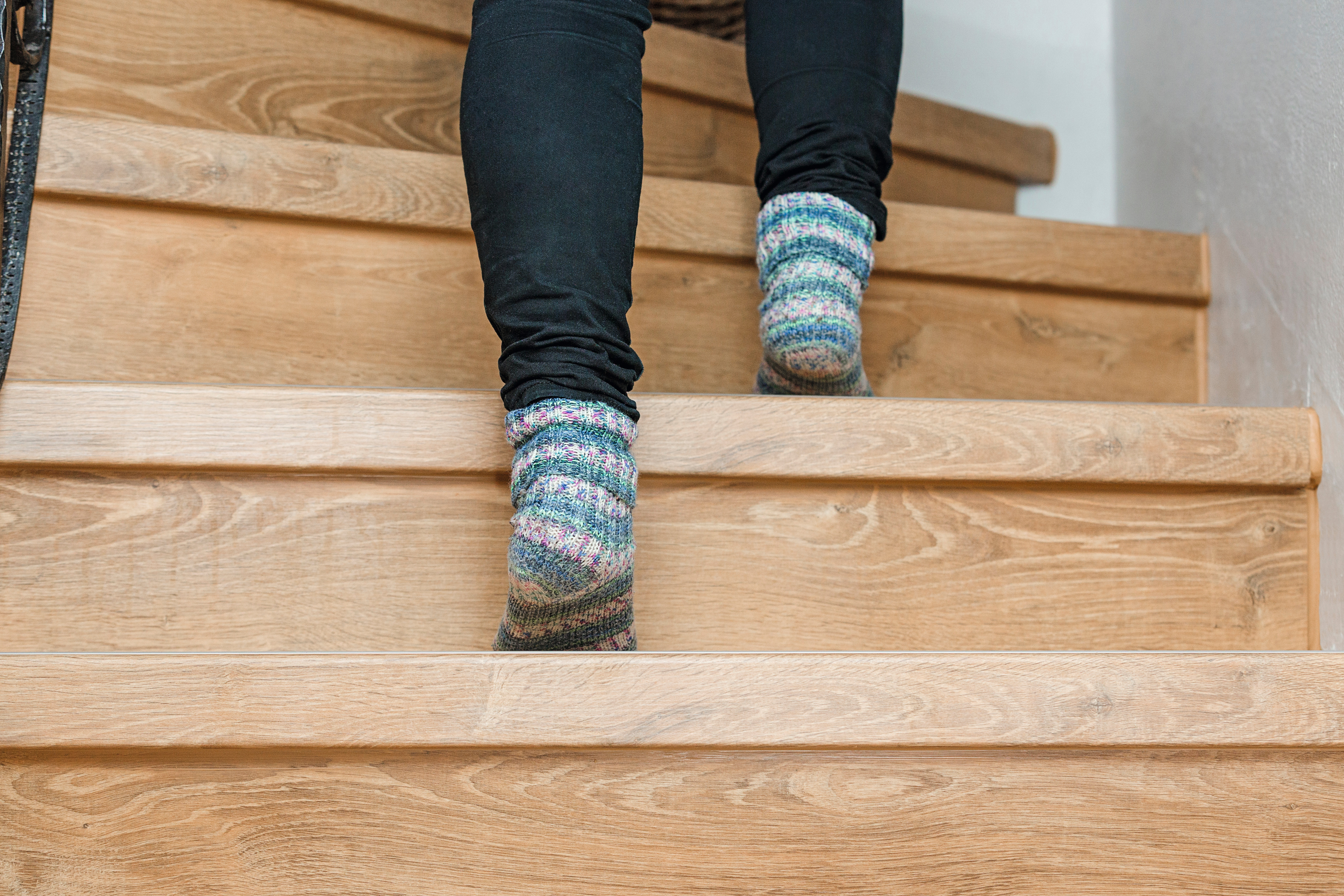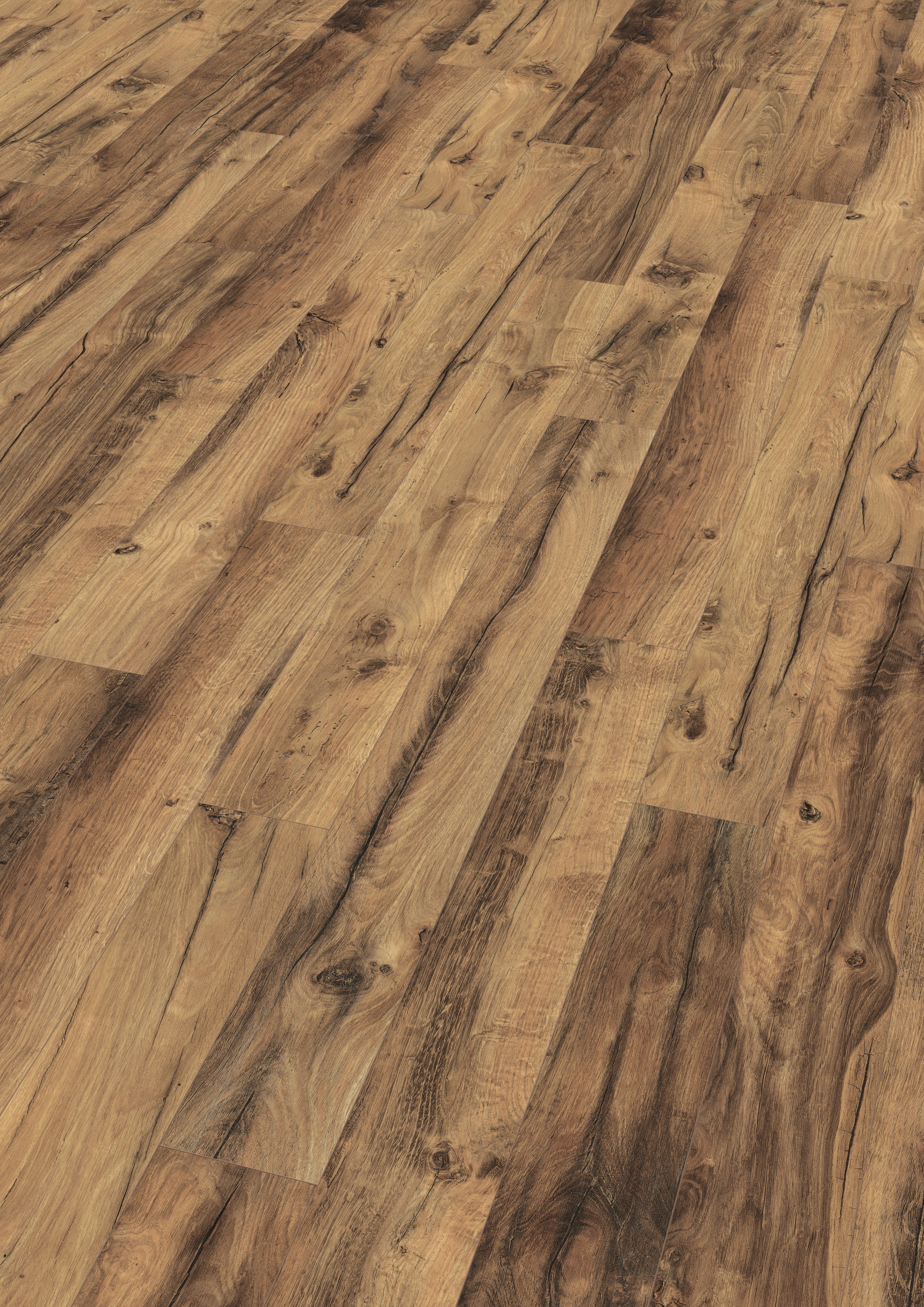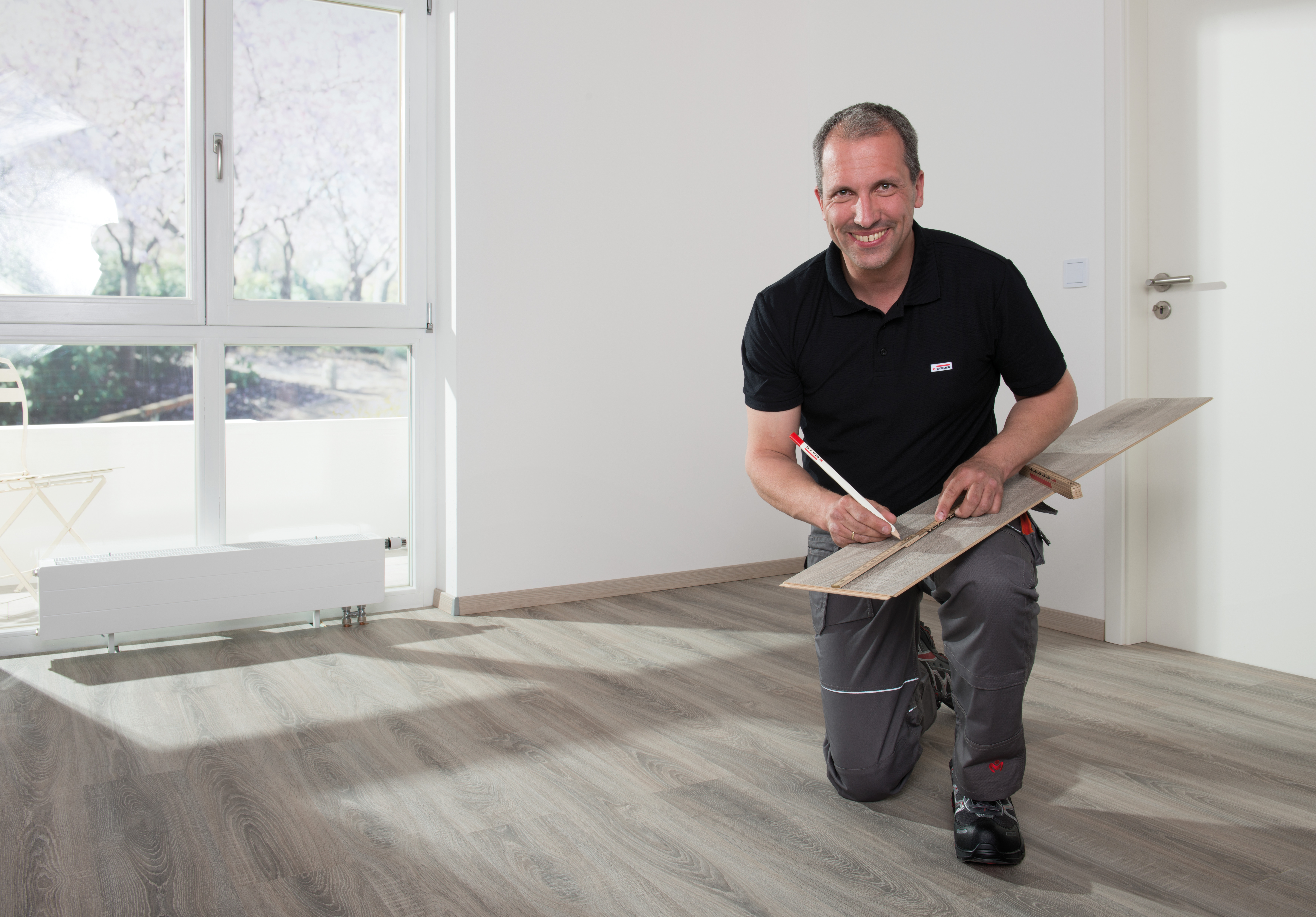
Laminate flooring comes with many benefits, from its durability and affordability to its versatile aesthetic appeal. However, one issue that can be a cause of frustration is a creaky and squeaky laminate floor. That annoying noise underfoot can make an otherwise beautiful floor feel more like a source of irritation, especially on newly installed flooring which should be in top condition.
If you’ve found yourself tiptoeing across your laminate floors to avoid that irritating creak, it’s time to fix the issue. Fortunately, many causes of squeaking and creaking laminate flooring can be easily resolved with some DIY. In this guide, we'll explore why laminate floors creak, whether it’s something to worry about, and most importantly, provide practical steps to help you stop laminate floor creaking and squeaking so you can get rid of that annoying noise once and for all.
Article by: Laura Walker , Design & Flooring Senior Specialist, EGGER UK
Is it normal for laminate floors to creak?
A squeaking and creaking floor can be an irritation, but is it something for homeowners to worry about or should laminate flooring creak? The answer is no, laminate floor creaking is not normal! If a laminate flooring makes a noise when walked on, this always means that there is a vertical movement in the installed area that should not be there. This likely indicates that there is an underlying issue with either how the laminate flooring has been installed or the subfloor.
Why is my laminate floor creaking?

Understanding why your laminate floor creaks when you walk on it is key to putting a stop to the noise once and for all. The reason for any creaking sound is vertical movement or springing when the floorboards are walked on. There are several different causes of this, which we’ll explore in more detail below.
Issues with the subfloor
One of the most common causes of a squeaking and creaking laminate floor is problems with the subfloor, which is the surface onto which your laminate flooring is laid. If the subfloor has bumps, dips, or inconsistencies, your laminate planks may not sit evenly. Over time, the weight of people walking on the laminate laid over an uneven subfloor floor can cause the planks to shift and rub against each other, creating a creaking or squeaking sound.
In some cases, you may find that the squeaking noise isn’t from the flooring at all but from the subfloor itself. This may occur in plywood subfloors installed with nails that have become loose over time. If you’re in the process of installing a plywood subfloor and want to avoid this issue in the future, opt for screws instead of nails.
Choosing the wrong underlay
Choosing the right
underlay
is crucial when installing laminate flooring. This essential layer acts as a buffer between the laminate and the subfloor, providing support and helping to reduce the squeaking and creaking of a noisy laminate floor. If the underlayment is too thin or is low quality, it won’t cushion the laminate properly, which can lead to creaking. The good news is that choosing the right noise-reduction underlay for laminate flooring and laying it correctly can have a huge impact on reducing that irritating creaking and squeaking.
Moisture and humidity problems
Changes in humidity or water damage can also be the cause of laminate floor noise when walking on it. Laminate flooring, like any wood-based material, expands and contracts in response to moisture. Excessive moisture can cause the boards to warp, or even lift up from the subfloor, which leads to movement and creaking when walked on. In contrast, very dry conditions can cause the planks to shrink, leaving gaps that allow the planks to shift more easily and create a squeaky laminate floor.
Incorrect installation
If you’re wondering why your new laminate floor is creaking, this can sometimes be a result of poor installation practices. Whether it's poor underlay installation, using the wrong tools, or laying improperly fitted boards, mistakes made during installation can result in a floor that creaks. If shortcuts were taken during the installation process, you might notice creaking much sooner. It is essential that you always follow the manufacturer's installation instructions, as these describe exactly how to install your laminate flooring correctly.
One of the most common mistakes when laying laminate flooring is leaving inadequate expansion gaps. Laminate flooring needs room to expand and contract with changes in temperature and humidity. During installation, an expansion gap — typically around 8mm to 10mm — must be left around the edges of the room, between the flooring and the walls or other fixed objects. If these gaps are not sufficient or are completely missing, the laminate planks can press against the walls as they expand, causing tension and leading to a squeaking and creaking laminate floor.
How to stop my laminate floor from creaking

Now you know the reasons why a laminate floor can creak, the next step is to find the source of the problem so that you can resolve the issue efficiently. Do this by walking around the affected room/s and making a note of the exact spaces where the noise occurs. You should press firmly down on the floor in these areas to feel for movement.
Once you’ve found the source of the creaking by feel, the next step is to get a closer look at the area. You should examine the seams between planks to see if there are noticeable gaps or a slight movement when you step on them. If there is, this is a sign that the laminate boards aren’t properly connected. You should also look for signs of visual moisture damage, such as discolouration, warping, or bubbling of the laminate. If the creaking laminate sound is coming from below a heavy piece of furniture, try to move it slightly to see if the creaking sound stops or changes. If this resolves the issue, simply buying some furniture pads or rearranging the layout of the room may help.
Unfortunately, it isn’t always this easy to figure out how to stop laminate flooring from squeaking and creaking, especially if something is going on under the surface, such as with the subfloor or underlay. If you can’t see an issue and you expect the problem to be below the laminate, you may need to remove the laminate flooring to get a closer look. Make sure to do this carefully in order to avoid damage so you can relay it once the creaking issue has been solved.
Once you have found the source of the problem, your next step is to learn how to fix your creaky laminate floors. Depending on the cause, there are various solutions ranging from simple DIY fixes to more extensive interventions. One temporary solution is to use a lubricant, such as WD-40 or a specially designed laminate lubricant spray. However, this will only reduce the friction between the boards in the short term. Below are the methods you may need to resolve the most common causes of creaky and squeaky laminate floors in the long term.
Tighten loose laminate floorboards
Loose laminate boards are a common cause of creaks, usually occurring as a result of age or wear and tear. The good news is that you can free yourself from creaking laminate floorboards by simply tightening them up. Once you’ve pinpointed the problem boards, simply apply a small amount of flooring adhesive to the loose boards and gently tap them back into place using a rubber mallet. If adhesive doesn’t solve the issue, you may need to completely uninstall and reinstall the affected planks, ensuring that they lock together properly.
Replace the underlay
If the underlay has not been installed correctly, or if it is not appropriate for laminate flooring, it’s best to start from scratch and install a new one. Here at EGGER, we have some of the best laminate underlay options for noise reduction, including the EGGER Silenzio Easy , Silenzio EASY SD , Silenzio Duo , and the Silenzio Professional SD 3-in-1.
Fix the subfloor
If you believe the subfloor is the issue, you will have to remove the laminate flooring and the underlay to get to the source of the problem. One of the most common problems with subfloors is the surface being uneven. You can find out how to even out your subfloor in our guide to laying laminate underlay . You should also use screws to secure any loose sections of the subfloor. Once the subfloor is secure, reinstall the laminate planks, ensuring they are locked tightly back into place.
Fill in or reduce expansion gaps
If the expansion gap in your laminate flooring is slightly too wide, you can use a floor filler or a beading strip to reduce it. For gaps that are slightly too small, you can try trimming the skirting boards slightly to allow more space for the flooring to move. However, for gaps that are far too large or far too small, the best option is likely to remove the flooring and relay it, this time including an adequate expansion gap. To ensure you have the right-sized expansion gap when relaying the flooring, leave any new laminate planks in the room for a couple of days to acclimatise to the temperature and humidity levels.
Replace damaged planks
If individual planks have become damaged or warped, they may cause laminate floor creaking or squeaking that cannot be fixed with the above methods. In such cases, replacing the damaged planks may be the best solution. This is something you can do yourself by using a pry bar to gently lift and remove the damaged planks. Be careful not to damage the surrounding boards while doing so to avoid more creaking problems. Once the damaged plank has been removed, fit the new plank in place according to the manufacturer's instructions, ensuring it locks securely with the neighbouring boards.
When is it time to replace my laminate flooring?
If you’ve tried the methods above and you still can’t stop your laminate floor creaking, it could be time to replace your flooring completely. Just like most other things in your house, laminate flooring does have a lifespan (usually of up to 25 years, although higher quality ones can last a lot longer). Creaking may simply be a sign that it is coming to the end of its lifespan. In the case of poor-quality laminate or poorly installed flooring, it can be more efficient to lift it up and start again. The flooring should also be replaced if there are large gaps and height differences in the installed surface, to minimise the risk of injury or danger to people.
Before laminate deciding whether to replace your creaky laminate flooring, make sure to get in touch with an expert who can check whether the laminate surface can still be repaired. If you do choose to replace your flooring, make sure to read our guide on how to remove laminate flooring .
Creaky and squeaky laminate flooring is a common complaint, but it doesn’t have to be. After reading this guide, you should be able to figure out why your laminate floor is creaking and how to fix the issue yourself.
For more advice on installing and taking care of your laminate flooring, make sure to head to the laminate flooring resource hub for all the information you need, from calculating how much laminate you need to cleaning your laminate flooring .
Support
This article is for informational purposes only. If you are searching for the information about specific EGGER products, please visit our knowledge hub .
You might also be interested in:
- Common mistakes when laying laminate flooring (& how to fix them)
- How to clean laminate flooring?
- How to remove laminate flooring?
- How much laminate flooring do I need?
- How to remove laminate flooring?
- How to finish laminate flooring edges?
- How to level a floor?
- How to lay laminate flooring: a step-by-step guide
